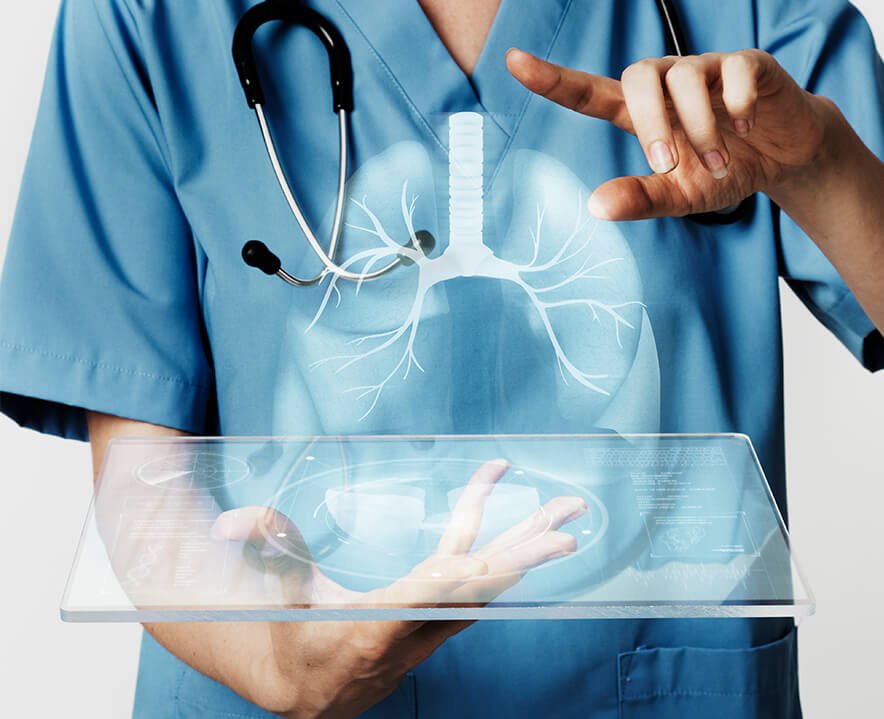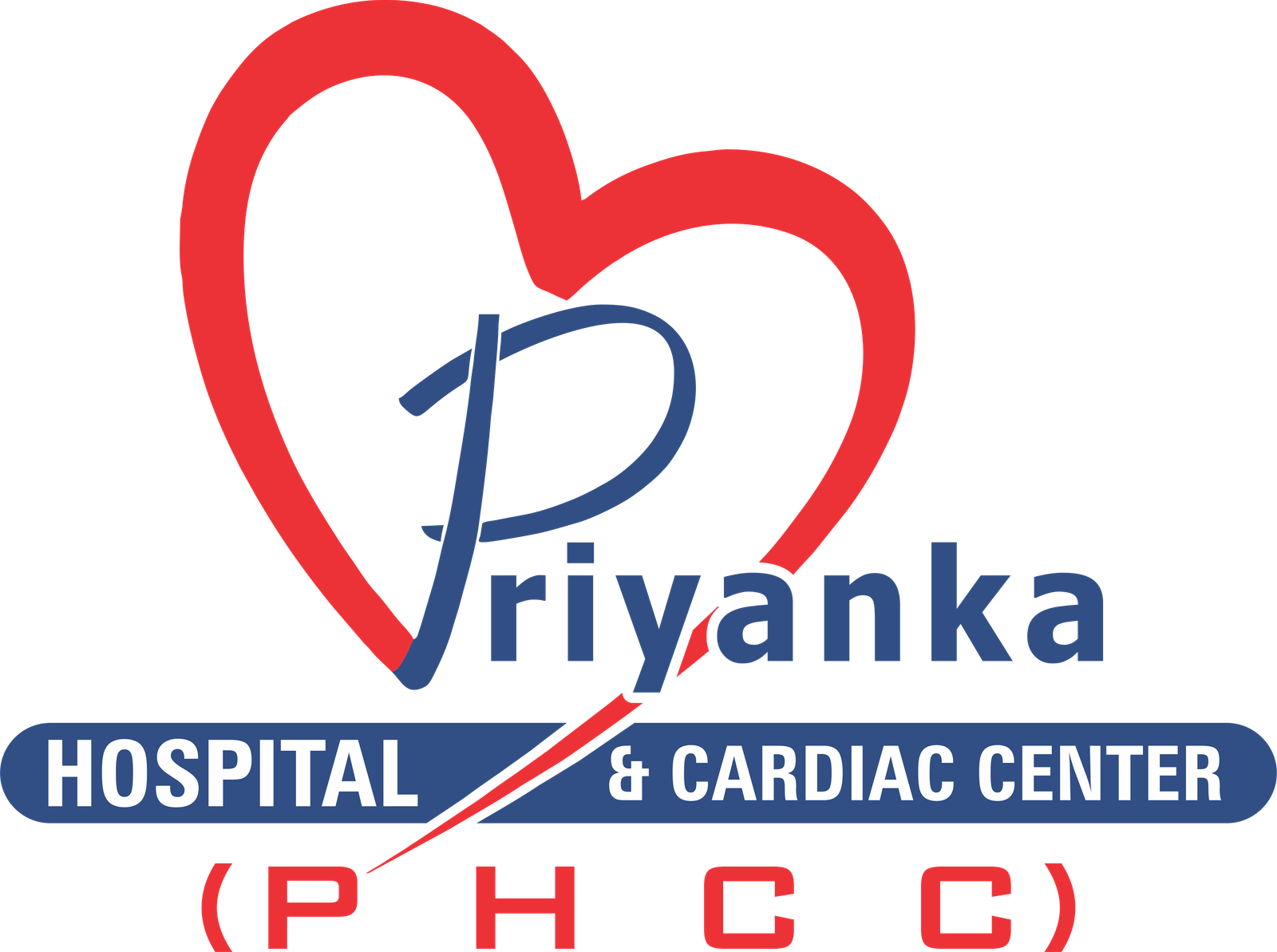Best Pulmonology Hospital in Jaipur
Priyanka Hospital specializes in pulmonology, the medical field dedicated to respiratory system ailments. As a leading pulmonology hospital in Jaipur, we offer comprehensive healthcare services for patients with respiratory disorders.
Our expert pulmonologists are highly skilled in diagnosing, treating, and managing pulmonary illnesses across all age groups, addressing diverse medical needs.
At Priyanka Hospital, our pulmonologists are proficient in utilizing the latest technology and techniques for pulmonary problem management. This includes interventional pulmonology and multidisciplinary approaches to conditions like interstitial lung disease and pulmonary hypertension, which may involve heart and lung complications.

Why Choose Priyanka Hospital For Pulmonology in Jaipur
Being one of the top pulmonology hospitals in Jaipur, Priyanka Hospital has a wide portfolio of services to cater to all the pulmonary needs of the patients. The respiratory care is our niche, and our team is capable of managing complex cases of patients who need critical care interventions enhanced by sophisticated diagnostic procedures and less invasive surgeries. This also includes rehabilitation programs of the lungs and constant observation for possible complications after surgery during hospitalization. Thus, with our broad concept, we strive to achieve not only the quick restoration of the functions of the organ but also the patient’s well-being.
What procedures can they perform?
Pulmonologists specialize in diagnosing and treating conditions related to the respiratory system, including the lungs and airways. While they don’t typically perform surgical procedures themselves, they may collaborate with surgeons for certain interventions. However, they can perform various diagnostic and therapeutic procedures, including:
1. Pulmonary function tests: These tests determine how effectively the lungs are working including the volume of lungs, the rate of gas exchange and the rate of airflow.
2. Bronchoscopy: A technique in which a thin and flexible tube with a camera inserted through the nose or mouth to the lungs to identify the trachea, bronchi, and its branches also to take small tissue sample or to remove foreign bodies.
3. Thoracentesis: A technique of draining off fluid or air, especially when accumulated between the lungs and the chest cavity through the use of a needle inserted through the chest wall.
4. Pleural biopsy: A method of taking samples from the pleura or lining of the lungs and chest to be examined.
5. Arterial blood gas (ABG) sampling: A procedure where certain values such as oxygen and carbon dioxide in blood, pH, and bicarbonate level are quantified in order to determine the function of the lungs as well as the balance of acids in the body.
6. Pulse oximetry: A painless procedure that estimates the amount of oxygen in the blood through ClO2, an oximeter attached to the fingertip or earlobe.
7. Exercise testing: Examinations done to determine the capability of the lungs and the heart during periods of exercise.
8. Allergy testing: Child sensitization tests to determine the causative agents of respiratory disease.
9. Sleep studies: Investigations performed to determine the presence of sleep disorders like the sleep apnea and the respiratory efficiency of the patient while asleep.
10. Bronchial thermoplasty: A technique applied in the management of severe asthma that applies a defined amount of heat on the airway walls to minimize the size of smooth muscles.
11. Endobronchial ultrasound (EBUS): A less invasive procedure that uses bronchoscopy with ultrasound to examine and take biopsies of tissues close to the airways like the lymph nodes.
12. Pleuroscopy: An operation that is almost similar to thoracoscopy but is used to investigate and possibly treat the interior of the pleural cavity by taking a biopsy or performing a drain.
These procedures assist the pulmonologists in diagnosing respiratory disorders, observing the disease progression and thus coming up with the management strategies that would enhance lung and respiratory processes.
Explore Our Main Service
FAQs on Pulmonology
What is Pulmonology and what conditions does it treat?
Pulmonology is a medical specialty focused on the diagnosis, treatment, and prevention of diseases and conditions affecting the respiratory system, including the lungs and airways. Pulmonologists diagnose and manage a wide range of respiratory conditions such as asthma, chronic obstructive pulmonary disease (COPD), pneumonia, tuberculosis, lung cancer, pulmonary fibrosis, pulmonary hypertension, and sleep-related breathing disorders like obstructive sleep apnea.
What are the common symptoms of respiratory diseases, and when should I see a pulmonologist?
A gynecological exam typically includes a discussion about your medical history, a physical exam including breast and pelvic exams, and possibly screenings such as Pap smear, STI testing, and discussion about contraception or family planning options. Your gynecologist will ensure your comfort and privacy throughout the exam.
How are respiratory conditions diagnosed by pulmonologists?
Pulmonologists use a combination of medical history evaluation, physical examination, pulmonary function tests (such as spirometry), imaging studies (such as chest X-rays or CT scans), bronchoscopy (to visualize the airways and obtain tissue samples), blood tests, and other specialized tests to diagnose respiratory conditions and determine their severity and underlying causes.
What are the treatment options for respiratory diseases?
Treatment for respiratory diseases depends on the specific condition, its severity, and the patient’s individual needs. Options may include medication (such as bronchodilators, corticosteroids, antibiotics, or antifungal drugs), oxygen therapy, pulmonary rehabilitation, lifestyle modifications (such as smoking cessation and weight management), vaccination (such as flu and pneumonia vaccines), and surgical interventions (such as lung resection or lung transplantation).
How can I maintain lung health and prevent respiratory diseases?
Maintaining lung health involves adopting healthy lifestyle habits and minimizing exposure to risk factors that can damage the lungs. This includes avoiding tobacco smoke (including secondhand smoke), reducing exposure to air pollution and environmental toxins, practicing good respiratory hygiene (such as frequent handwashing and covering your mouth and nose when coughing or sneezing), staying physically active, eating a balanced diet rich in fruits and vegetables, and getting regular exercise and vaccinations as recommended by your healthcare provider. Regular check-ups with a pulmonologist can also help monitor lung health and detect any early signs of respiratory disease.
Still Have a Question?
If you cannot find answers to your queries, please fill out the enquiry form or call the number below. We will contact you shortly
